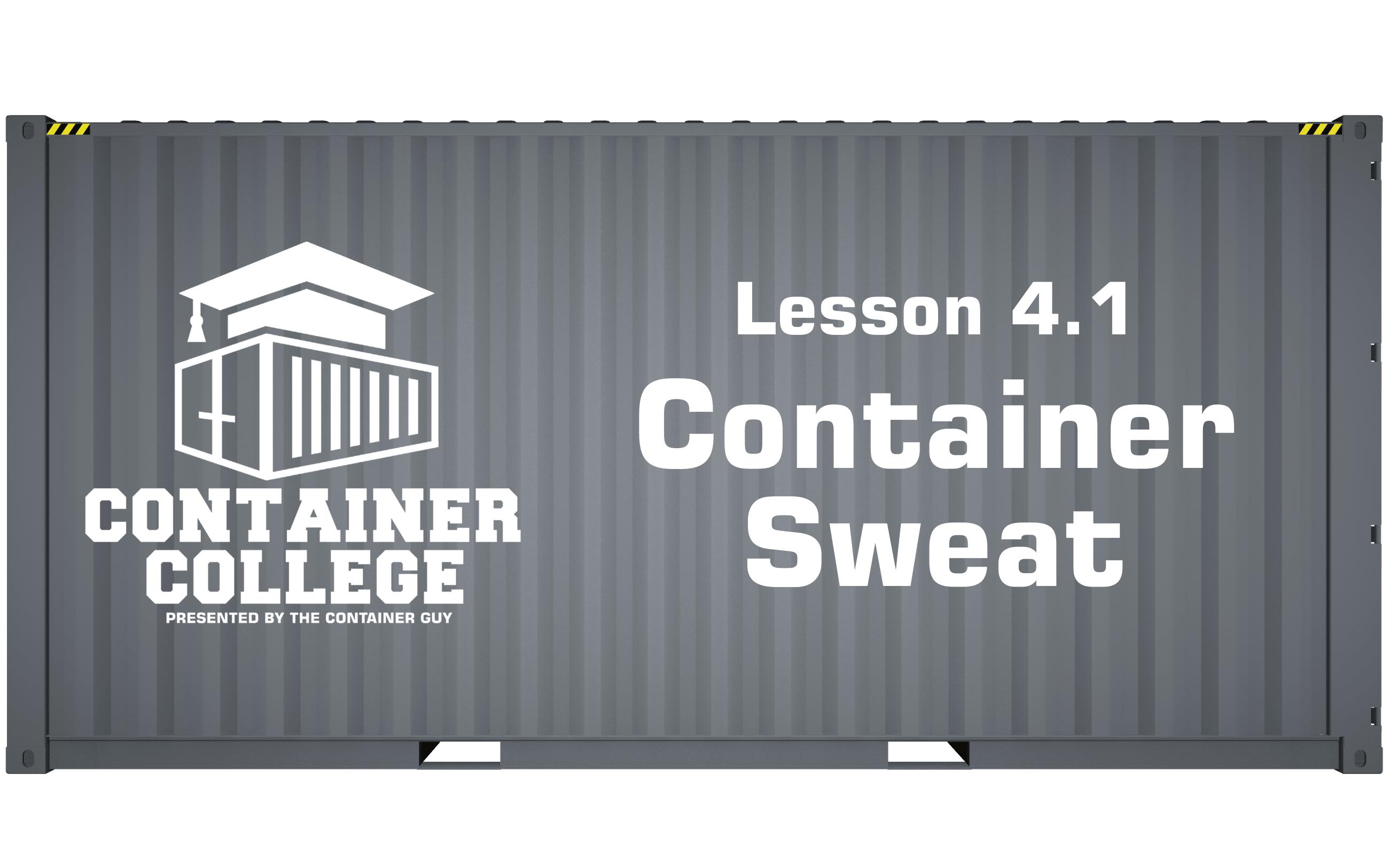
Ever opened a shipping container and found water dripping from the ceiling, or noticed mold forming on tools, furniture, or equipment inside? That’s not a leak, it’s condensation. Also known as "container sweat," this is one of the most common problems people run into when using containers for storage or modification projects.
Let’s break down why containers sweat, and most importantly, how to solve and prevent it.
Why Do Containers Sweat?
Shipping containers are built to be airtight and watertight, which is great for transporting goods, but not ideal when they’re sitting on your property through weather changes.
What causes container condensation?
- Temperature swings (warm days, cold nights)
- High humidity inside the container
- No airflow to allow moisture to escape
- Trapped air from people, tools, or off-gassing from contents
This leads to moisture buildup inside the container, usually on the roof and upper walls, where warm air rises and condenses on cold steel surfaces.
Tip: Even new containers will sweat if they’re sealed tight and not ventilated properly. It’s a physics problem, not a product flaw.
Solutions for Condensation
Solving container sweat comes down to ventilation, moisture control, and insulation. Here are the most effective solutions:
1. Add Proper Ventilation
Airflow is key to preventing condensation. You need vents that allow humid air to escape while still keeping rodents and rain out.
CMW Product: Big Air 30, 45, & 60 Container Vents
- Designed specifically for shipping containers
- Built-in bug screen and drip guard
- Easy to install, no welding required
- Move serious air while keeping pests out
Pair two or more vents for cross-ventilation, with one located low on one side and one located high on the opposite side.
2. Use Roof Vents or Solar-Powered Exhaust Fans
Passive roof vents or powered fans draw rising warm air out of the container and prevent moisture buildup.
CMW Product: Container Roof Vent Kit
- Durable, low-profile design
- Installs cleanly without leaking
- Great for hot climates or sealed interiors
CMW Product: 57 Solar Vent (Fan)
- Solar-powered fan moves air 24/7
- Ideal for lined or insulated containers
- Zero wiring needed, DIY friendly
3. Control Interior Humidity
If you’re storing sensitive materials like wood, textiles, or electronics, consider using:
- Desiccant packs or buckets
- Dehumidifiers (for powered containers)
- Moisture-resistant bins or shelving
Tip: Avoid cardboard boxes on the floor, use shelves or pallets to allow airflow around your stored items.
4. Insulate Interior Surfaces
Adding insulation prevents the steel walls from becoming cold enough to attract condensation.
- Use spray foam, rigid board, or batt insulation
- Install a vapor barrier to stop trapped moisture
- Ensure ventilation is still in place
CMW offers weldless framing kits to help you insulate containers the right way, without cutting corners or the container.
Why Ventilation is Critical
Even if you insulate…
Even if you dehumidify…
If your container doesn’t breathe, moisture will find a way.
Properly installed ventilation is the first and most important line of defense against container sweat. It’s also one of the easiest modifications you can make to extend the life of your container and protect your contents.
To learn more about container condensation, check out our YouTube videos here and here.



